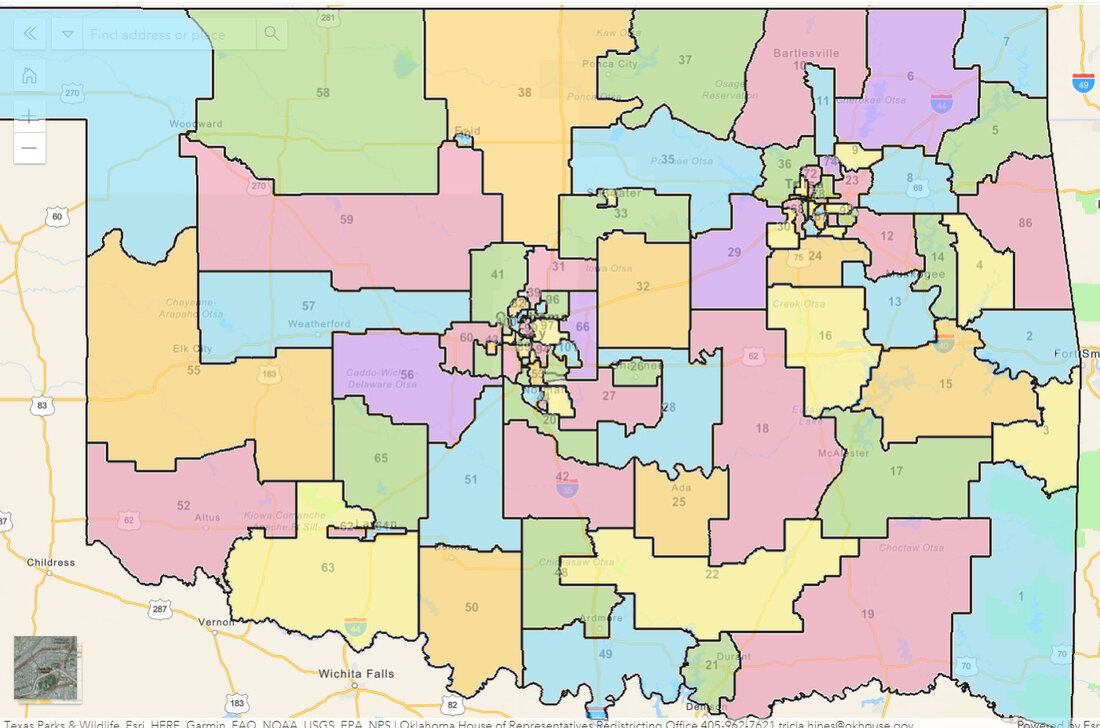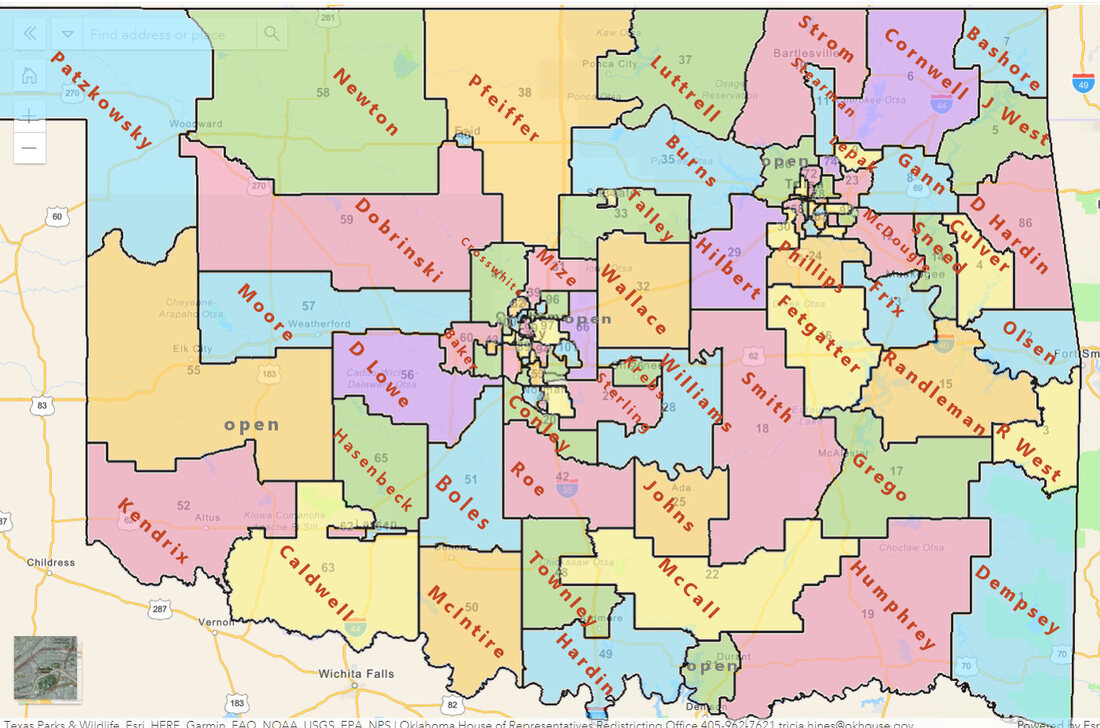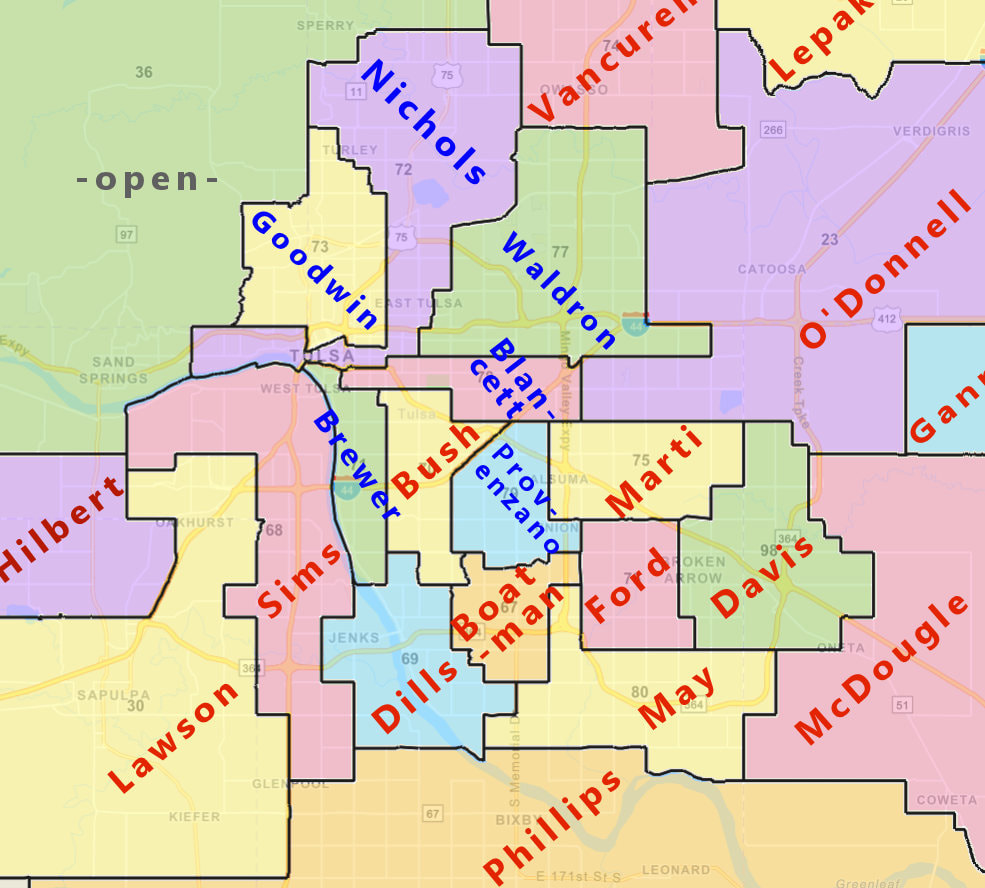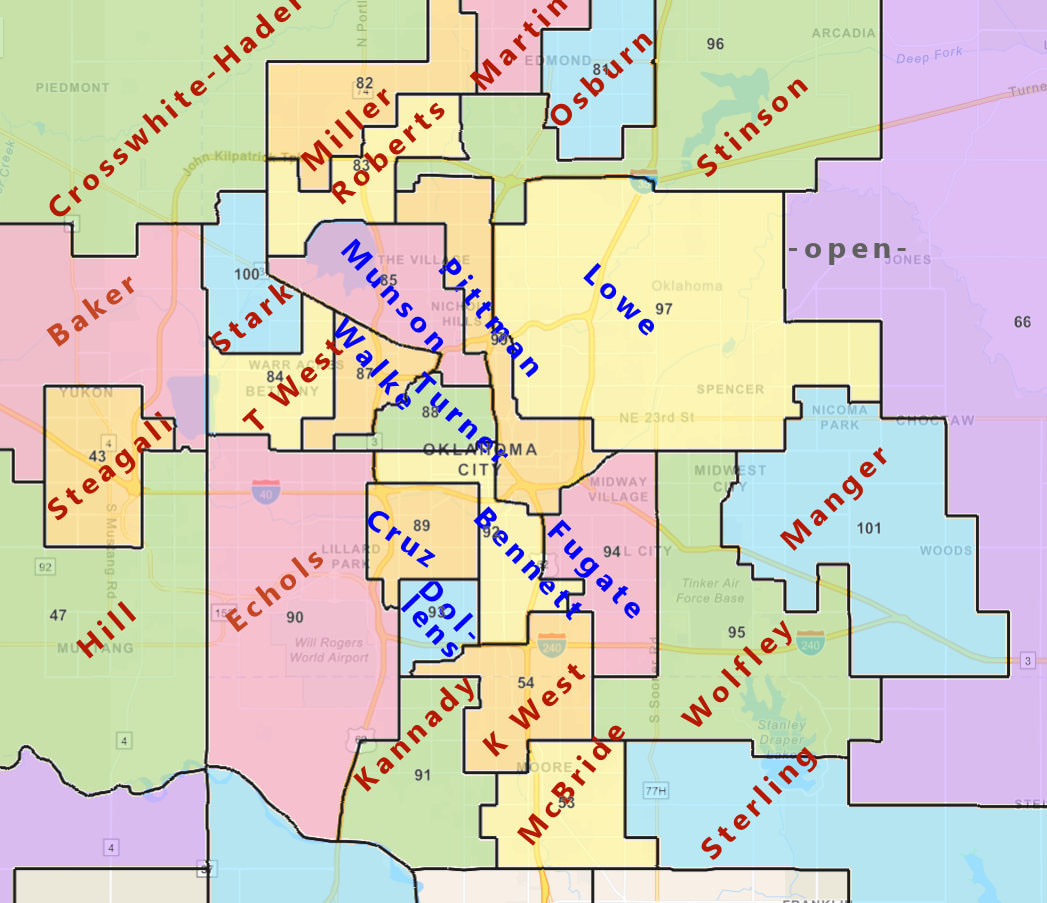|
A few weeks ago we revealed the Oklahoma Senate redistricting plan, and intended to follow up with the House report shortly after. Thank God we held off, because the House still wasn't done making radical changes in some areas.
The Senate maps are now awaiting final approval. The House maps are also awaiting the final signature. Suburban metro areas are receiving larger delegations while remote areas of the state are seeing their districts grow in geographic size. This is because the 14th Amendment of the US Constitution requires equal representation in the districts. Every district must be of very similar population, in the most current census reports. Wouldn't it be great if our school districts were reformed every decade, to assure our kids of an education environment where the resources are optimally and equitably spent? (I digress.) |
Part 2 of our series of Redistricting |
|
|
This appears to be the most 'bipartisan' redistricting project in recent decades. None of the Democrats I spoke with are in any way disappointed, or at least they are not publicly grumbling. I spoke with several Democrats about the project in the past week. In fact, Democrat Minority Leader, Emily Virgin, led the effort to pass these Senate & House reports while serving as vice chair of the Redistricting Committee in the House.
The resulting district maps look far less 'serpentine' than the 2011 districts, with a few exceptions. Precincts will face significant changes, especially in the metro areas. Some new legislative districts cut through some current precincts. When this becomes established law, the county election boards will take on a task of redrawing precincts. This will have to happen after the municipalities redraw council districts, as well as the school districts. |






